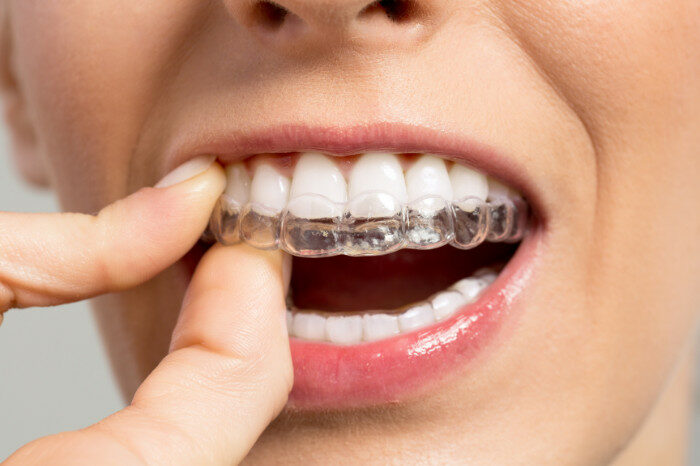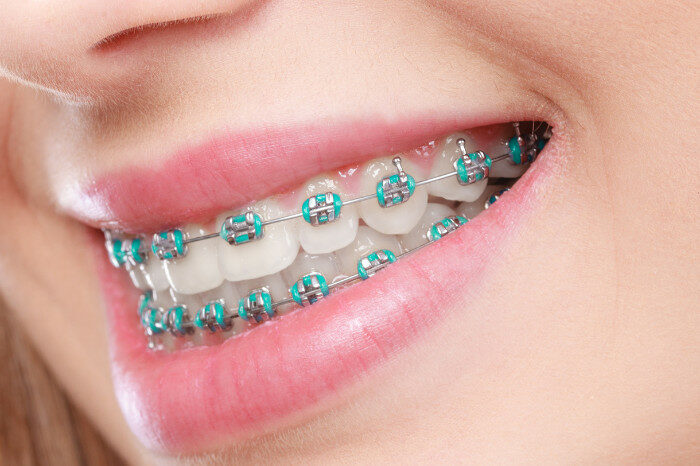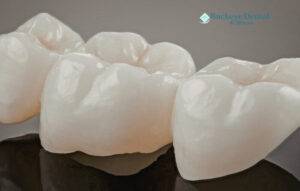When people hear the word “braces,” they often think about metal brackets and wires — but few truly understand how this orthodontic system works to transform your smile. You’re dealing with crooked teeth, an overbite, or crowding, braces can create a healthy, beautiful smile that lasts a lifetime. In this step-by-step guide, we’ll explain exactly how braces for your teeth work, from the initial consultation to the final retainer.
The Purpose Behind Braces

Braces do much more than improve aesthetics. They’re used to correct misalignment issues that can negatively impact your oral health. When teeth are not aligne correctly, they can cause jaw strain, chewing problems, and difficulty with oral hygiene, which increases the risk of gum disease and decay.
Orthodontists use braces for your teeth to gently move them into a better position. This process helps evenly distribute bite pressure and ensures long-term health for both teeth and gums. Braces are suitable for children, teens, and adults who want to correct a wide range of alignment problems.
Step 1: The First Consultation
Your journey with braces starts with a comprehensive consultation. At Buckeye Dental & Braces, this visit involves a detailed assessment of your dental structure. The orthodontist will take X-rays, digital scans, and photos of your teeth to understand your bite and determine which type of braces is best for your needs.
This appointment is not just about diagnostics. It’s also the perfect opportunity to ask questions, discuss goals, and learn what to expect. A customized treatment plan will be develop that aligns with your specific condition, lifestyle, and budget.
Step 2: Getting Ready for Braces
Before the actual placement of your braces, your teeth and mouth must be properly prepar. This ensures the treatment goes smoothly and effectively. Sometimes, a dental cleaning is needed to remove plaque and tartar before braces are applied. In other cases, dental work such as filling cavities or extracting teeth may be necessary if there’s overcrowding.
For some patients, spacers may be insert between back teeth to make room for metal bands. These spacers are worn for about a week and are remove just before the braces are install. Preparing your mouth is an important phase that ensures long-term treatment success.
Step 3: Braces Installation
The application of braces typically takes 1 to 2 hours. It’s a comfortable, painless process, though you may feel slight pressure or tightness afterward. Your orthodontist will clean and dry your teeth, then use a special bonding agent to attach small brackets to each tooth. Next, a thin metal archwire is thread through the brackets and held in place with tiny rubber bands or clips.
This archwire is the key component that applies gentle, continuous pressure to guide your teeth into their new positions over time. Once everything is secure, you’ll be ready to begin your orthodontic journey.
Step 4: How Braces Move Your Teeth
Braces work by slowly shifting your teeth through a biological process called bone remodeling. This process allows the bone around the teeth to adapt as the teeth move.
Here’s how it works:
- The archwire puts pressure on the teeth.
- This pressure stimulates the periodontal membrane and surrounding bone.
- Bone is broken down (resorption) where pressure is applied.
- New bone is form (deposition) on the opposite side.
- The teeth move steadily in response to this pressure.
This movement is carefully monitore by your orthodontist to avoid complications and ensure healthy bone development throughout treatment.
Step 5: Adjustments and Progress Checks
After the braces are installe, you’ll return to the office every 4–8 weeks for adjustments. These appointments are essential for keeping the treatment on track. During each visit, your orthodontist may change the archwire, replace elastic ties, or tighten components to continue guiding your teeth.
You might feel soreness for a day or two after adjustments, but this is a normal part of the process. It’s a sign that your teeth are responding and shifting correctly. Staying consistent with appointments is crucial for staying on schedule and achieving the best results.
Step 6: Managing Discomfort During Treatment
It’s normal to experience mild discomfort after the placement of braces or after an adjustment. Your cheeks, lips, and tongue might need time to adjust to the new hardware. Thankfully, there are several ways to reduce irritation and pain.
Try these methods to ease discomfort:
- Use orthodontic wax on brackets that irritate the inside of your mouth.
- Take over-the-counter pain relievers as recommended by your orthodontist.
- Rinse your mouth with warm salt water to reduce inflammation.
- Stick to soft foods like mashed potatoes, smoothies, and soups when soreness is present.
This transitional discomfort usually fades within a few days, and as your treatment progresses, you’ll get use to the feeling of having braces.
Step 7: Foods to Avoid with Braces
Wearing braces means making some dietary changes to avoid damaging the components. Crunchy, sticky, or chewy foods can dislodge wires or brackets, delaying your progress.
Avoid these types of food:
- Sticky candies like caramel or taffy
- Hard snacks like nuts and popcorn
- Crunchy vegetables (unless cut into small pieces)
- Chewy breads like bagels
- Gum and sugary treats
Choosing the right foods protects your braces and keeps your treatment on schedule. Don’t worry — it’s temporary, and the reward is a beautiful smile.
Step 8: Brushing and Flossing with Braces
Oral hygiene is more important than ever while wearing braces for your teeth. Food particles can easily get trapped around brackets and wires, increasing your risk of cavities and gum disease. Brushing and flossing techniques may need to be adjusted.
You should brush at least twice a day, ideally after every meal. Using a soft-bristled toothbrush or an electric one can help clean around the brackets more effectively. Flossing is also essential, though it can be tricky. Floss threaders or water flossers make the job much easier and more thorough. Don’t skip this step — maintaining healthy gums and teeth ensures your new smile will be both straight and strong.
Step 9: How Long You’ll Wear Braces
The duration of treatment with braces for your teeth varies depending on the complexity of the case and the type of braces used. Most patients wear braces for 18 to 24 months, though some cases may take longer or shorter.
Factors influencing treatment time include:
- Severity of misalignment
- Patient’s age
- Type of braces (metal, ceramic, or clear aligners)
- Compliance with care and follow-up visits
- Oral hygiene habits
Your orthodontist will provide a personalized estimate during your consultation and update it as progress continues.
Step 10: Retainers – Keeping Your Smile in Place
Once your braces come off, it’s time for the retention phase. Teeth naturally want to drift back to their old positions, so retainers are necessary to hold them in place. Depending on your treatment, your orthodontist may recommend either a fixed or removable retainer.
Retainers should be worn as instructed — typically every night — to maintain the beautiful results you’ve worked so hard to achieve. Skipping this step can undo months or even years of progress. Remember: orthodontic treatment isn’t truly over until your teeth have stabilized in their new position.
Types of Braces Offered

At Buckeye Dental & Braces, we offer a variety of orthodontic solutions to match your unique lifestyle and preferences. Whether you want the classic durability of metal braces or the discretion of invisible aligners, we’ve got you covered.
Here are a few types we provide:
- Traditional metal braces
- Ceramic (tooth-colored) braces
- Lingual braces (placed behind the teeth)
- Clear aligners like Invisalign
Our team will help you choose the right option to meet your goals and budget. No matter the type, braces for your teeth are designed to give lasting, confidence-boosting results.
Braces at Every Age: Children and Adults
Orthodontic treatment is no longer just for teenagers. Children, teens, and adults all benefit from properly aligned teeth. In fact, more adults are choosing to get braces than ever before.
For children, early intervention can help guide jaw development and prevent severe misalignment later on. Adults often seek braces for cosmetic reasons or to correct issues left untreated in youth. It’s never too late to improve your dental health and appearance.
GMB Spotlight: Visit Us on Google
Looking for a reliable orthodontist near you? Buckeye Dental & Braces proudly serves the local community with expert care and modern orthodontic solutions. Our Google Business Profile features real patient reviews, office hours, photos, and directions to make your visit seamless. Whether you need an initial consultation or ongoing treatment, you can count on our reputation and personalized service. Discover why so many families trust us for their braces for your teeth needs — check us out on Google today!
Contact Buckeye Dental & Braces
Ready to get started with your smile journey? Contact Buckeye Dental & Braces today to book your consultation. Our friendly team is here to answer your questions and guide you through every step of the process.
📞 Call us now or visit our office — your new smile starts her!



